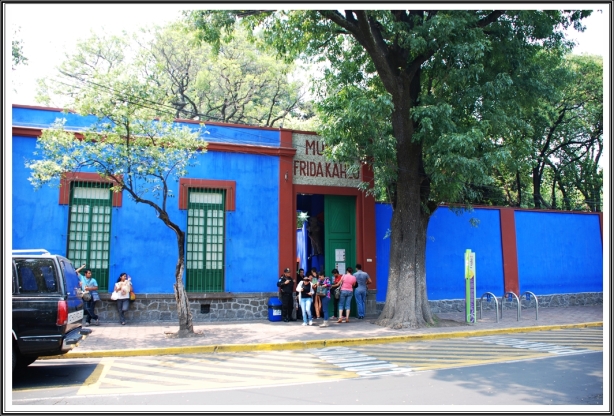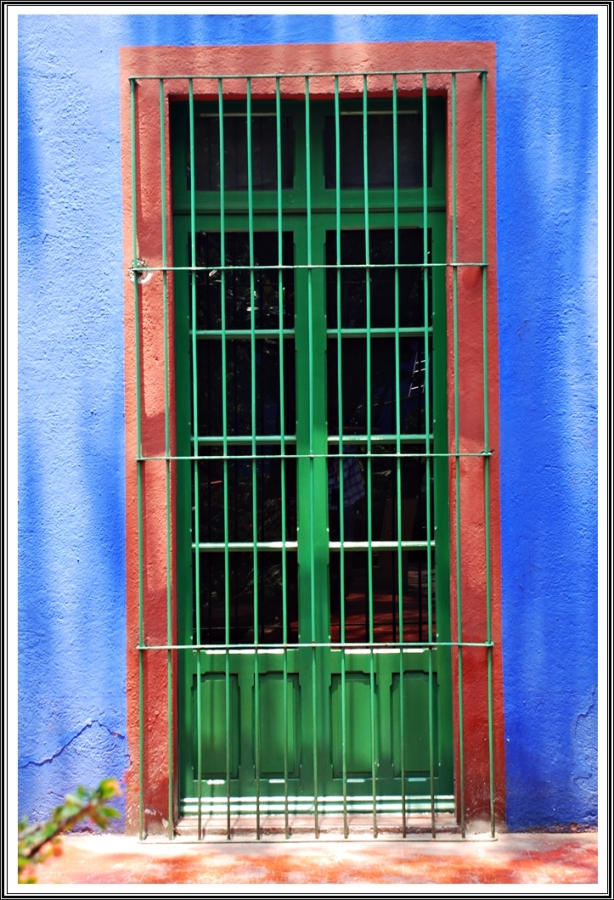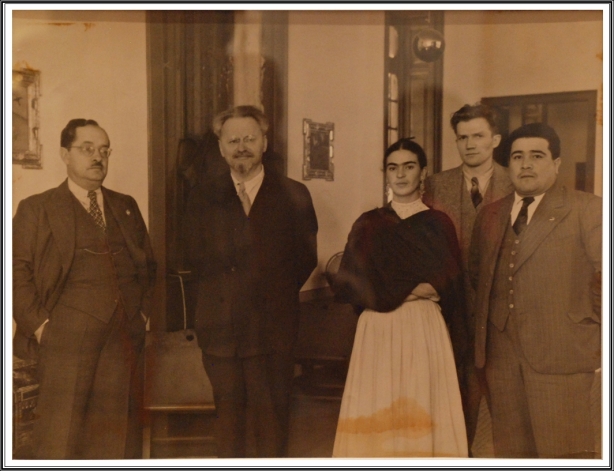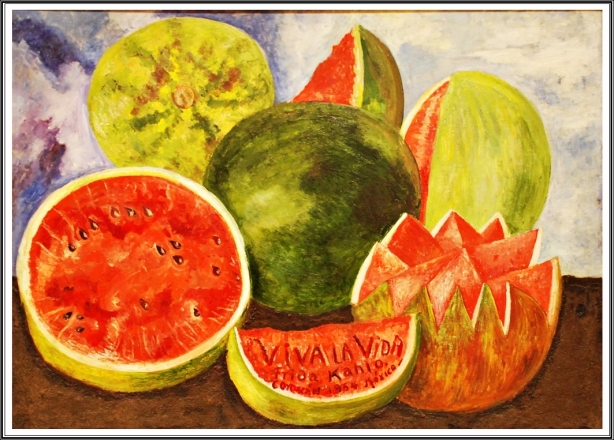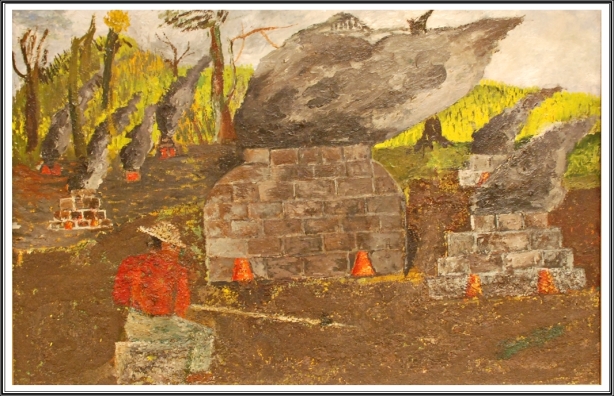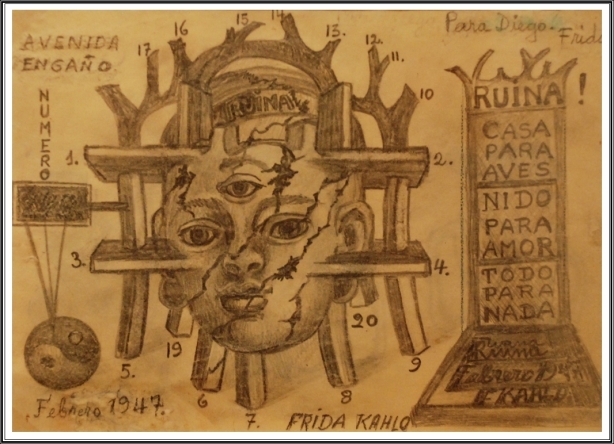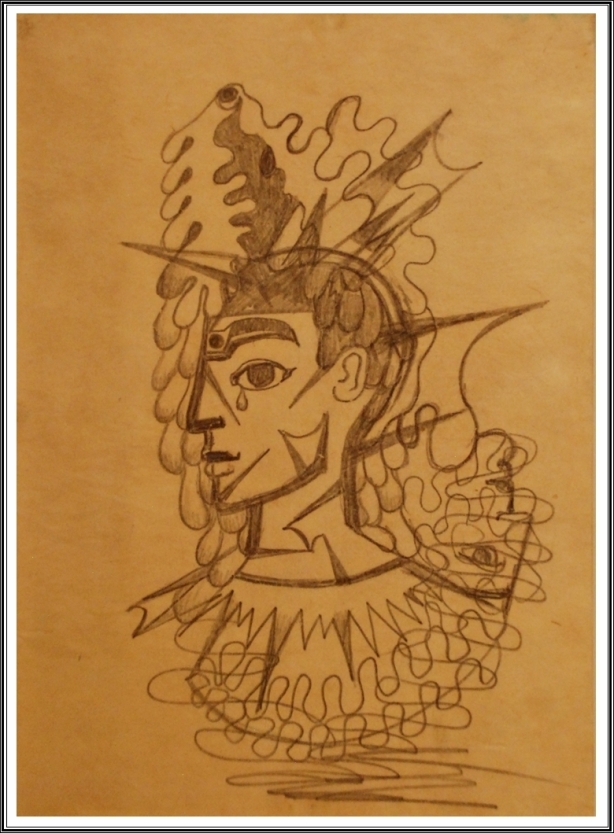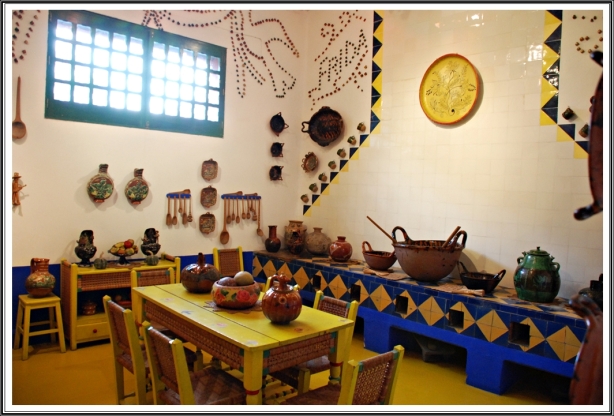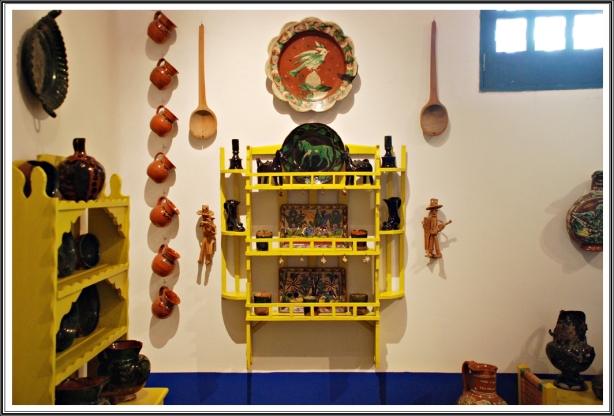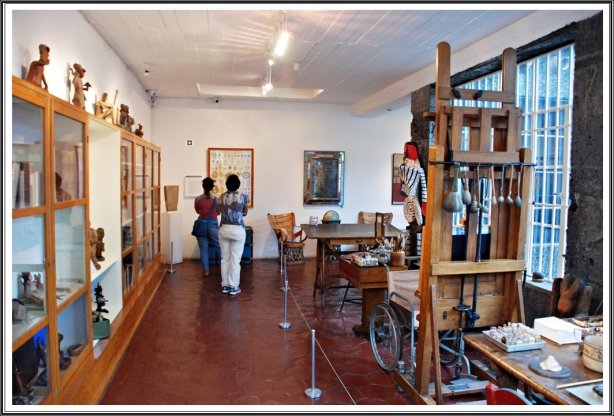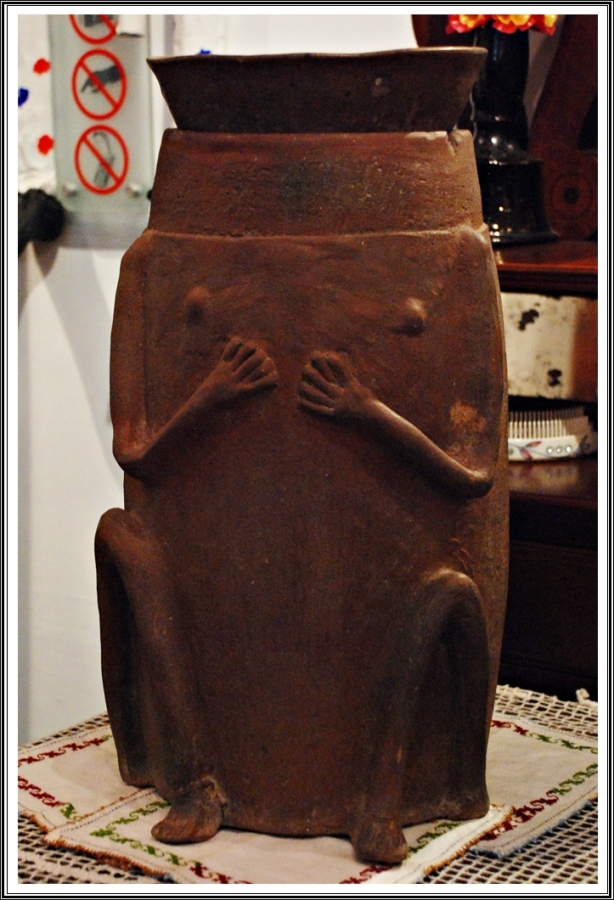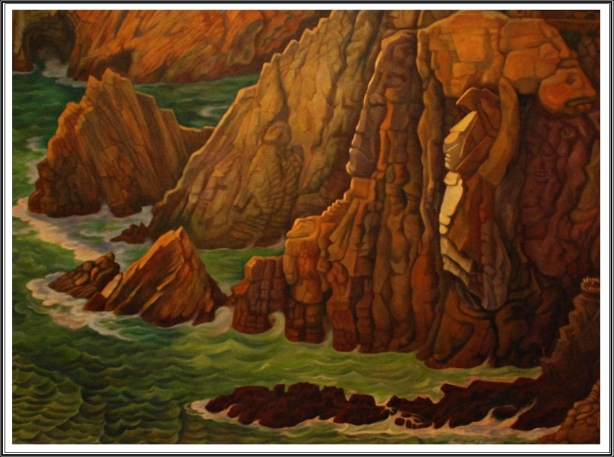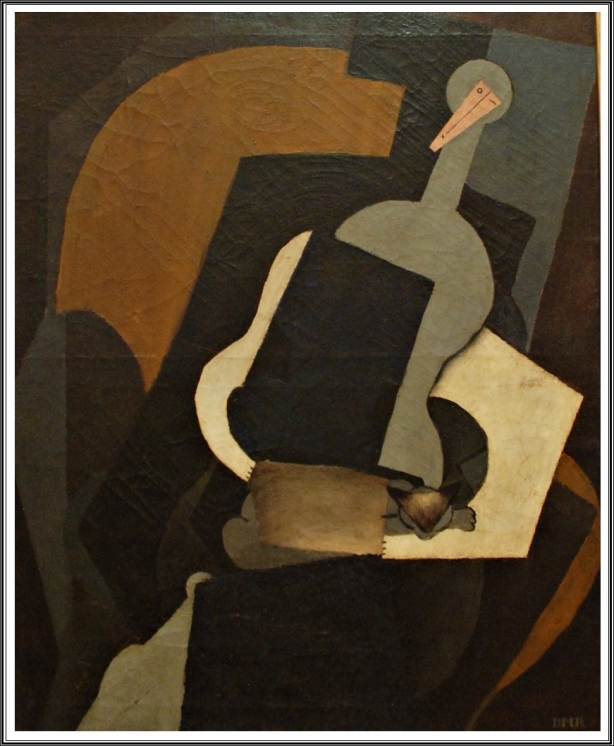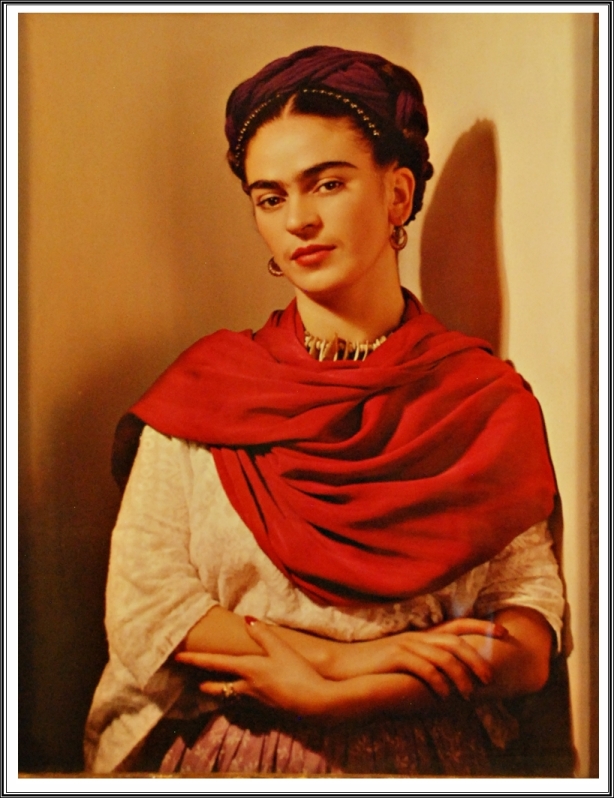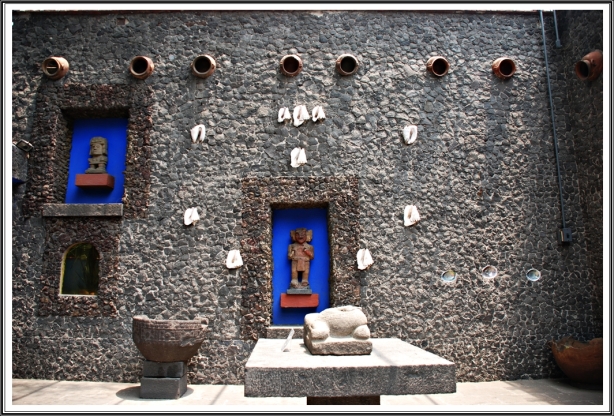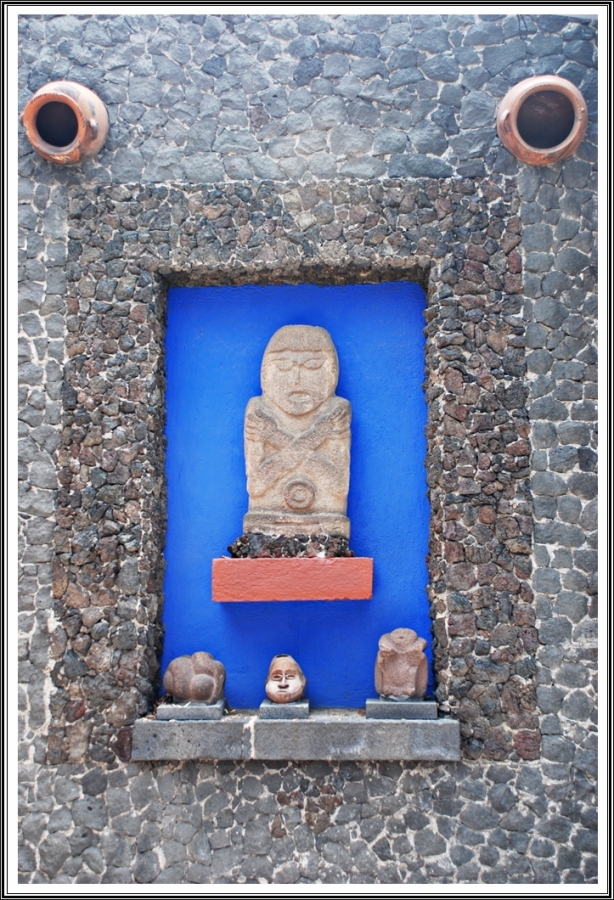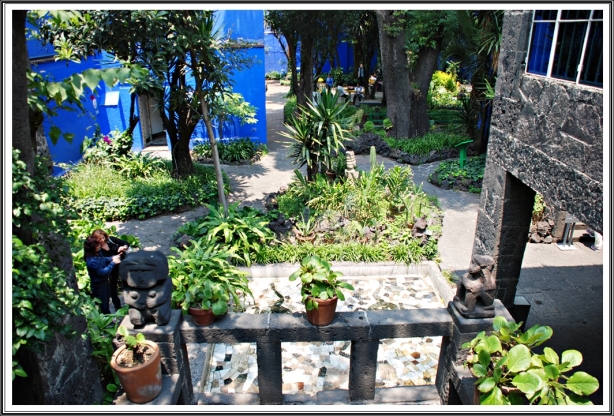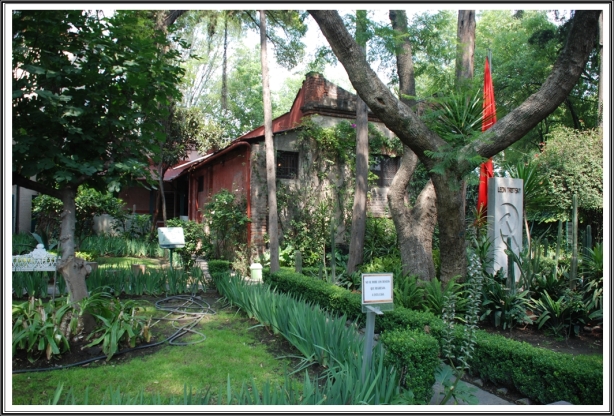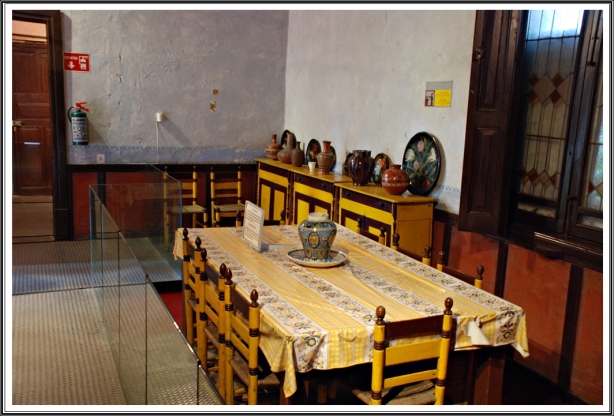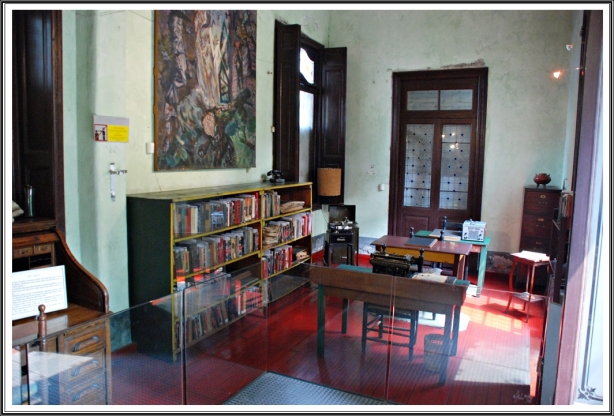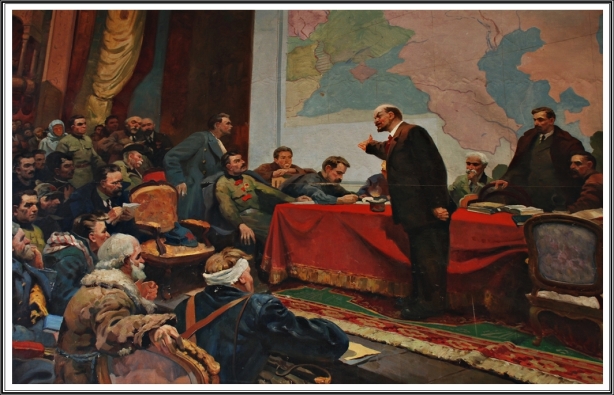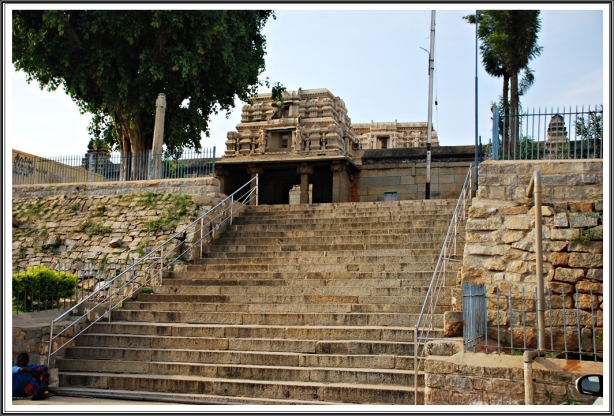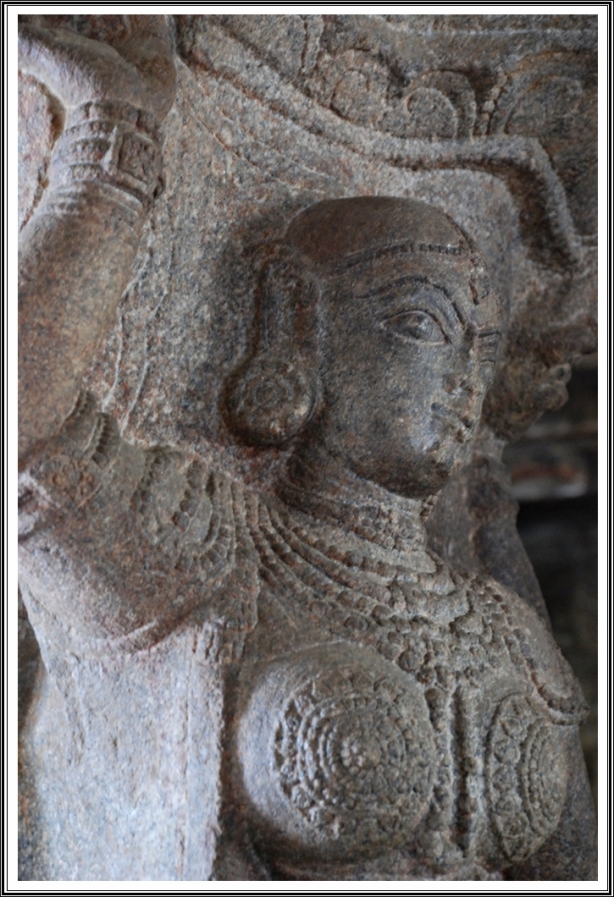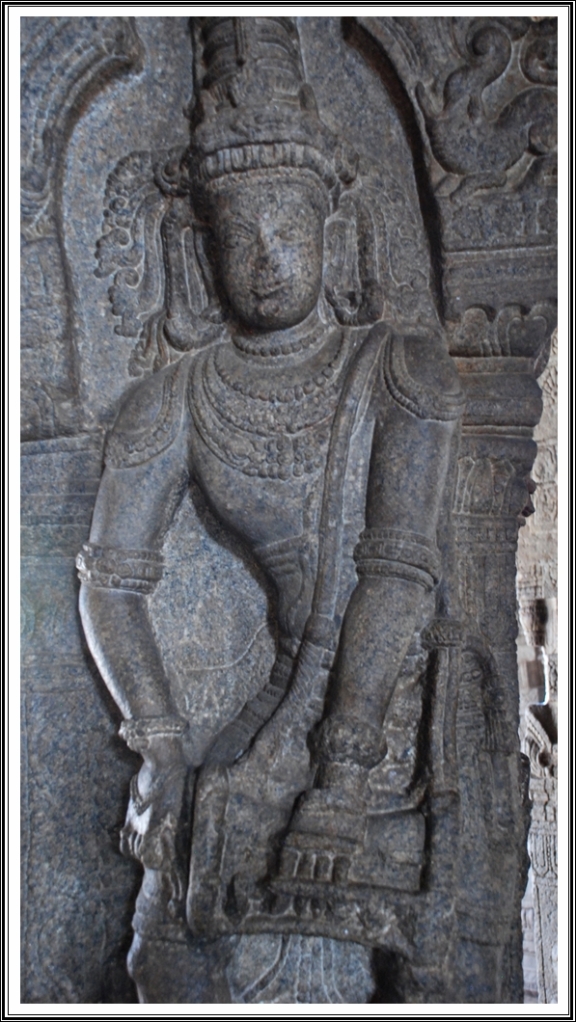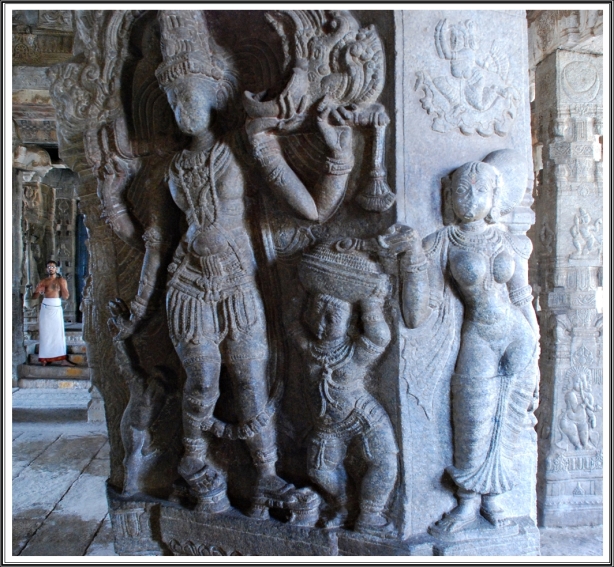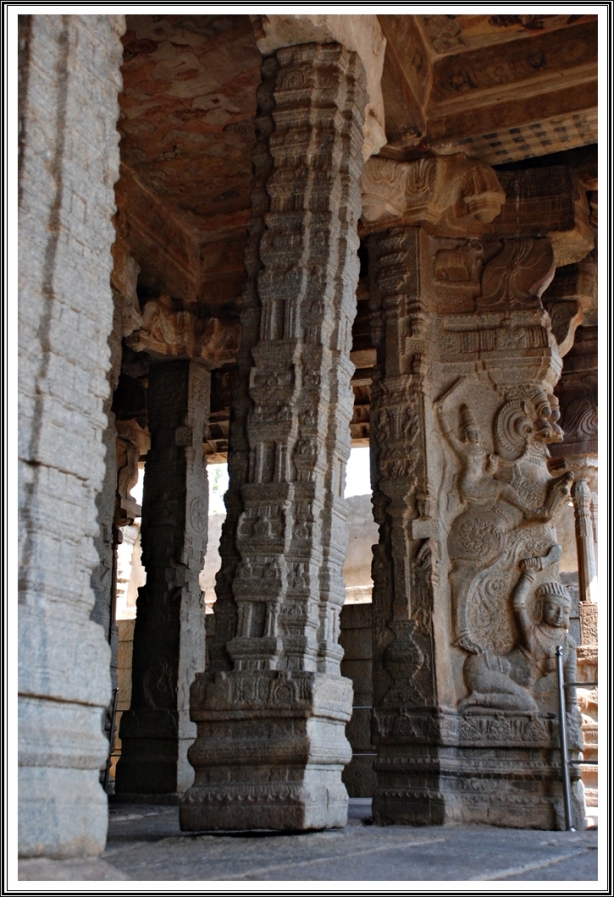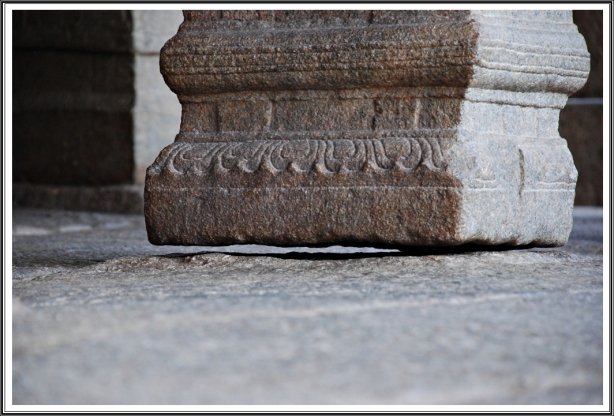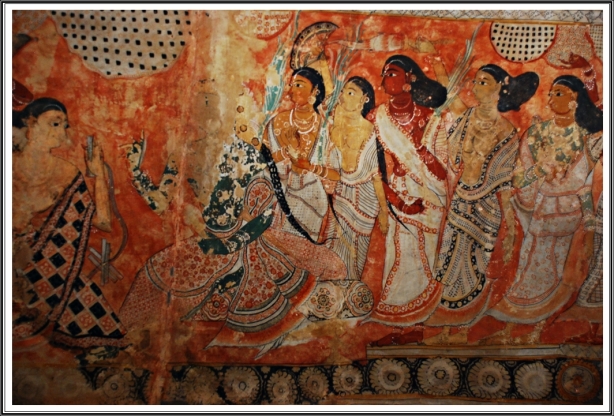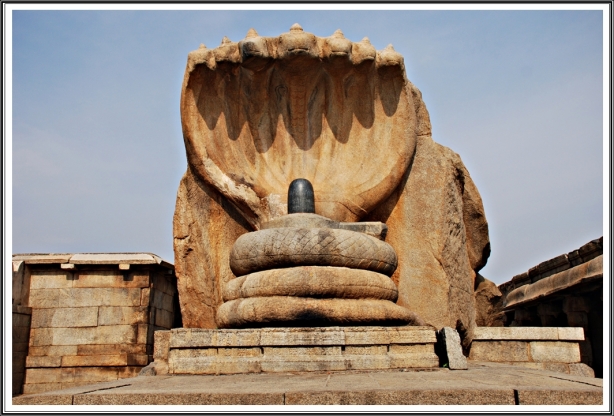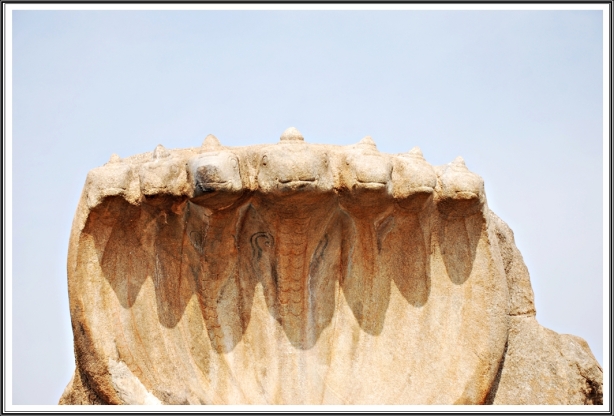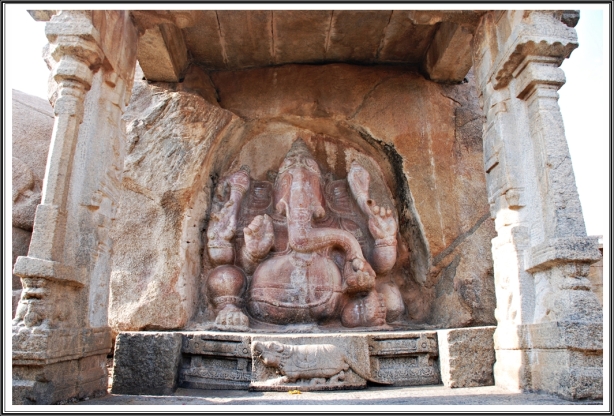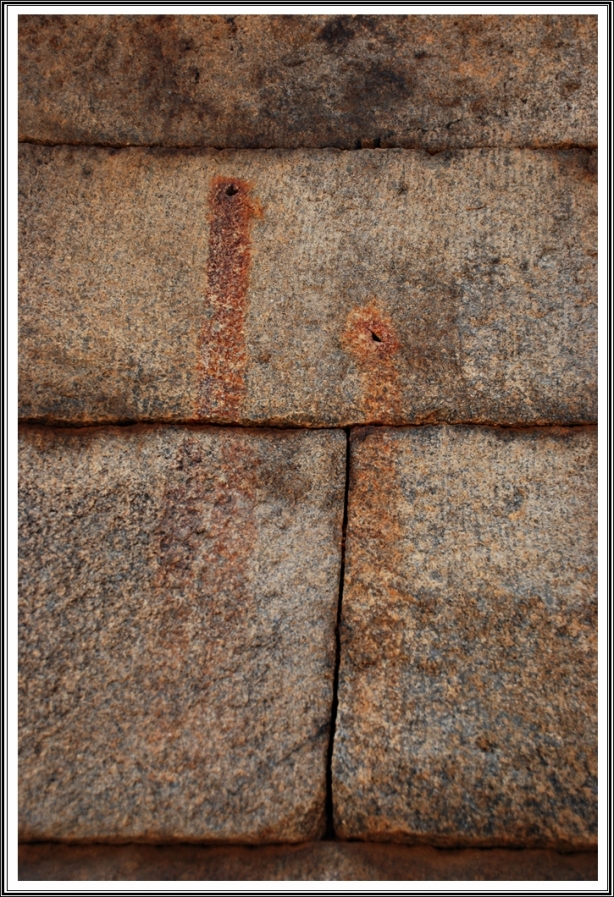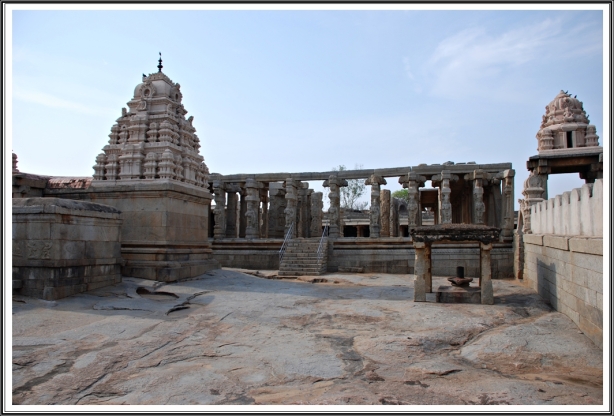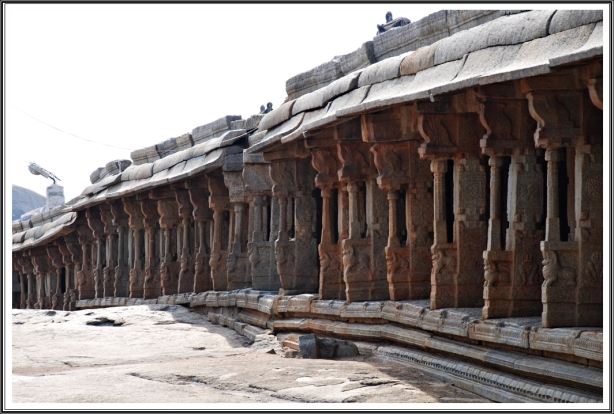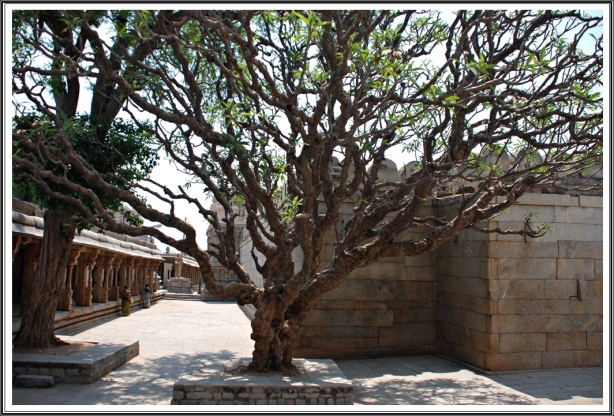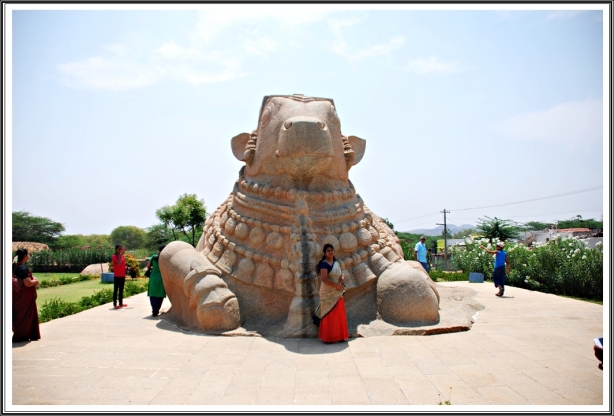During a recent trip to Mexico City in May 2014, I found myself with a couple of days to spare and I set off to the Coyoacan neighbourhood of Mexico City to have a look at the Frida Kahlo Museum, otherwise known as the Blue House. Another interesting spot in the area is the house where Leon Trotsky spent his last days and I planned to visit that as well. I had read a bit about Frida Kahlo and was curious to see her house and works and so preferred that over other attractions like the National Gallery.
The house looked plain enough from outside though it was apparent how it got its name.
Thankfully, they allowed photography inside the house and had an audio guide as well. The moment I set inside, I felt that I am at a place with a different feel to it. The colours were bright and it felt as if you yourself were in the frame of a painting! I do not know whether it was because of the reading I had done on Frida, which made me understand her as a very intense person, I could feel a strange energy in the house and even in the grounds.
This was where she was born, lived most of her life and died. She had a bad accident when she was quite young and that affected her mobility in her later life and she was often sick as well. She married the famous artist Diego Rivera and they had a tempestuous relationship. Each had various affairs on the side and separated once but remarried after a short while. The house had actually been bought by Diego Rivera to help Frida’s father tide over some financial difficulties but the house is quintessentially Frida. After she died, a grief stricken Diego decided to make it a museum for her and even though he himself was a famous and important artist in his own right, the place has been maintained as a memorial to Frida Kahlo.
As one set foot inside the house, the first sight is a beautiful fireplace designed by Diego Rivera. Both Frida and Diego had a deep interest in the folk art of Mexico and the design of the fireplace brings out this aspect. The flooring was of a bright yellow, in keeping with the rather bright blue outside. I was wondering how it would be to be surrounded by such bright colours all the time, especially when I contrasted with the pastel shades that I am used to at home.
Various finished and semi-finished paintings were displayed in the room. Frida was always deeply unhappy about her inability to be a mother and that often affected her works. For instance, the wife of the Mexican President commissioned her to do a painting and she did a still life. However, it was done on a specially made frame the shape of a womb and the fruits were also representative of female genitalia. The President’s wife reportedly refused to pay for the painting!
There is another unfinished work titled “Frida and the Cesarean”, which also depicts the deep frustration she had on this matter.
Frida’s father was a photographer and was a big influence in her life. There is a painting in the front room itself.
Both Frida and Diego were taken up by Marxism and invited Trotsky to Mexico. Trotsky and his wife stayed with them at the Blue House initially and the later on shifted to another house nearby. The photograph below shows Trotsky with Frida and Diego.
After Trotsky’s death, Frida and Dieg became Stalin’s followers. There were a couple of works that showed her involvement with Marxism.
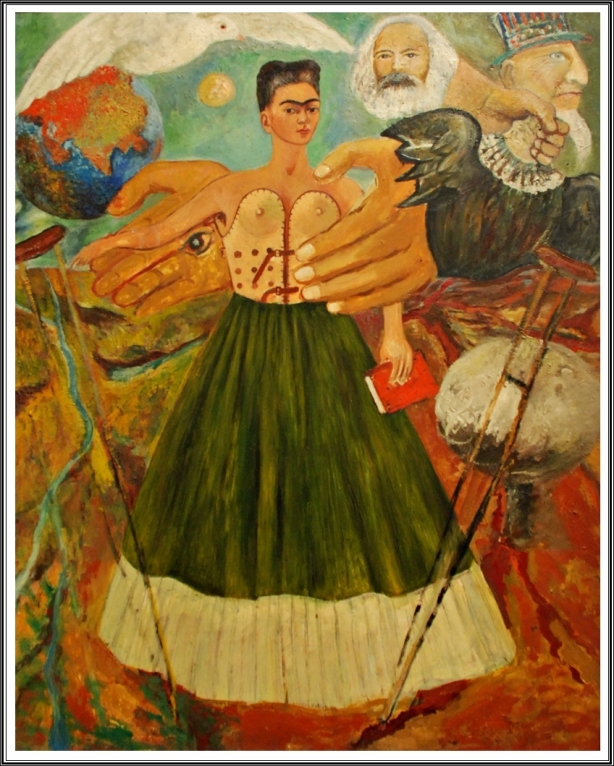 “Marxism will bring health to the sick”
“Marxism will bring health to the sick”
Frida was emotionally quite high strung and was physically unwell as well, many a time. Yet she had a strong will and fought to overcome her adversities. Many of the luminaries of the time were frequent guests of Frida and Diego and they had affairs with some of them as well. Diego’s affairs were all very public whereas Frida was more discreet. I read that Frida was always tormented by Diego’s unfaithful nature but I was a bit amused by that as by all accounts, she herself had enough affairs on the side (supposedly she even had one with Trotsky) as well!
There were many finished and unfinished paintings and sketches all around the house and even the unfinished works held some sort of attraction for me. Overall, I felt strangely drawn to some energy that this woman had left in the house and her works even after sixty years of her death.
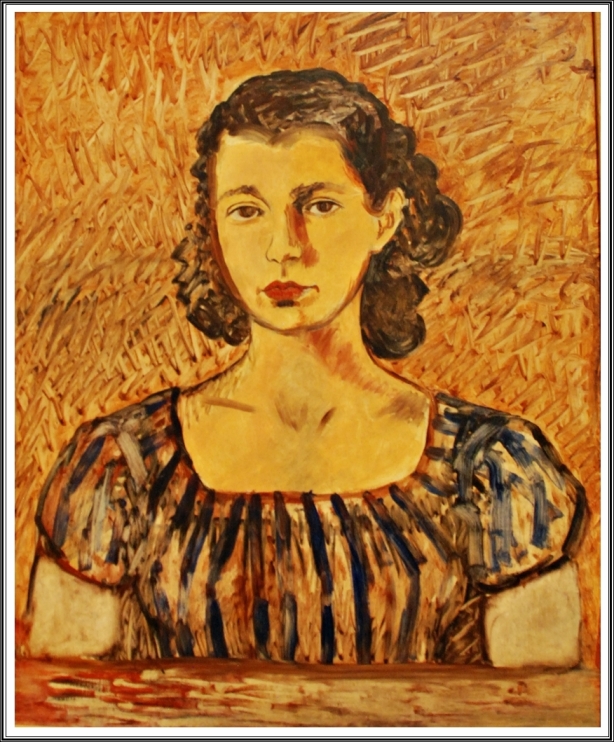 “Portrait of Arija Muray” (Unfinished)
“Portrait of Arija Muray” (Unfinished)
The house is full of bright colours and beautiful objects. There were many traditional utensils and in the kitchen, they used traditional methods for cooking.
Frida’s studio is on the first floor and I heard in the audio guide that Frida was so unwell many a day that she had to be carried up. The studio itself is brightly lit with sunlight streaming in from all sides.
Her bedroom is filled with many objects and there is a small ante-chamber that had a day-bed.
Inside the bed room is an urn designed in the traditional Mexican tribal style. This contains the ashes of Frida and to me it somehow was a bit strange and unsettling to think that her ashes were there inside that urn.
There were a few of Diego Rivera’s works also in the museum.
I stepped out once again in to the garden for a final look around and spent a few minutes contemplating on the life of this very gifted artist and wondered whether she would have been happy in her life. Intense people are often quite unhappy when they are down and reasonably high when they are feeling happy. In the house is a photograph of Frida Kahlo and I felt it captures her intensity very well.
Perhaps, these extremes are reflected in her work and in the house itself!
With these thoughts, I bid adieu to the Blue House and walked to the Trotsky Museum, which is quite close to the Frida Kahlo Museum.
If Frida’s house is painted blue, Trotsky’s is all painted red from the outside.
There is a small but nice garden in the house and the house itself is quite small and very modest. One would never expect that a man like Leon Trotsky, who was a key actor in an event that changed the course of the world – the Russian Revolution – would have lived here.
In 1929, Trotsky had a fall-out with Stalin and had to leave Russia. Stalin, was of course, in a drive to remove that could be a potential threat to him and his hold on power. Trotsky and his wife lived in different parts of Europe till 1937 and they went to Mexico on the invitation of Frida Kahlo and Diego Rivera. They even stayed with them will 1939 and then moved to another house in 1939. In May 1940, an attempt was made on Trotsky’s life, but he survived. The bullet holes from that assassination attempt can be seen on the walls even today. However, a second and successful attempt was made on August 20, 1940 and Trotsky was killed while he sat working on his desk.
 Photo of Trotsky reading a book
Photo of Trotsky reading a book
 Trotsky was working on this desk when he was killed
Trotsky was working on this desk when he was killed
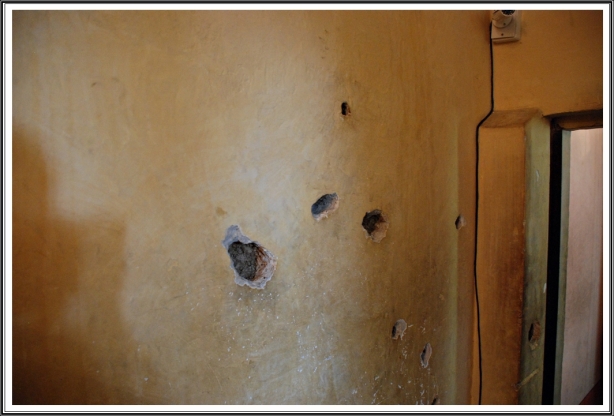 Bullet marks from the first assassination attempt
Bullet marks from the first assassination attempt
 Trotsky and his wife (who passed away in 1982) are buried in the grounds of the house.
Trotsky and his wife (who passed away in 1982) are buried in the grounds of the house.
In these very humble surroundings, lived a man who dedicated his life to the uplift of the working classes. He was the founder of the Red Guard and I thought about what I had read in John Reed’s “Ten days that shook the world”. In those days when the revolution was actually carried out, two men stood out as the key leaders who made a difference. Without them, the Bolshevik Revolution would definitely have failed. They were Lenin and Trotsky. It was evident that Trotsky had the same impact as Lenin and it must have been true because the book was written in 1919, well before any propaganda regime took over. Stalin is mentioned only twice in the book (and one is just in a list of members in some committee) whereas Trotsky is a presence throughout. Sure enough, Stalin banned the book and any mention of Trotsky soon became anathema in Soviet Russia.
There is a large painting just at the entrance of the museum and it depicts a meeting as part of the VIII Congress of the Soviets of Russia that was held in December, 1920. Lenin and Stalin are both present whereas Trotsky is absent, quite curious as Trotsky would definitely have been present, given his stature in the party. However, a closer look shows an empty chair with a green cap on it – just the one that Trotsky used to wear!
To me, this painting captured all that went wrong with a noble Revolution. Ultimately, man is greedy and power corrupts; even Stalin, who was a participant in the Revolution himself, was not above it. How right was George Orwell when he wrote in “Animal Farm” – “All animals are equal; bust some animals are more equal than others”.
